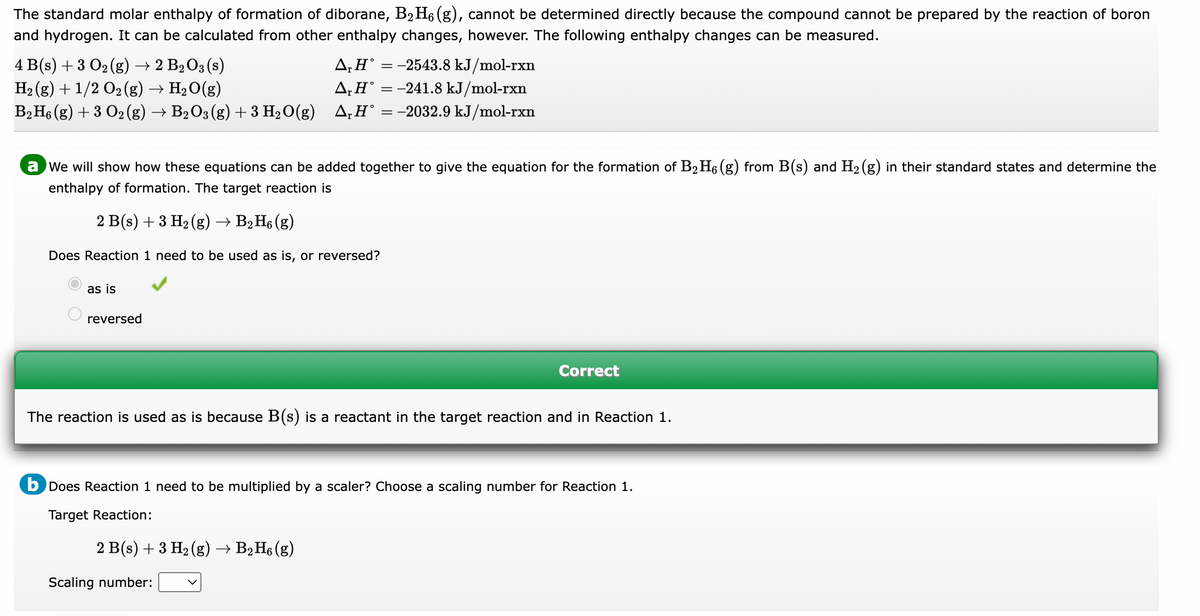The standard molar enthalpy of formation of diborane, B₂H₁ (g), cannot be determined directly because the compound cannot be prepared by the reaction of boron and hydrogen. It can be calculated from other enthalpy changes, however. The following enthalpy changes can be measured. 4 B(s) + 3 O₂(g) → 2 B₂O3(s) A, H = -2543.8 kJ/mol-rxn H₂(g) + 1/2O2(g) → H₂O(g) A, H = -241.8 kJ/mol-rxn B₂H6 (g) + 3 O₂(g) → B₂O3(g) + 3 H₂O(g) A,H° = -2032.9 kJ/mol-rxn a we will show how these equations can be added together to give the equation for the formation of B₂ H6 (g) from B(s) and H₂(g) in their standard states and determine the enthalpy of formation. The target reaction is 2 B(s) + 3 H₂(g) → B₂ H6 (g) Does Reaction 1 need to be used as is, or reversed? as is reversed Correct The reaction is used as is because B(s) is a reactant in the target reaction and in Reaction 1. b Does Reaction 1 need to be multiplied by a scaler? Choose a scaling number for Reaction 1. Target Reaction: 2 B(s) + 3 H₂(g) → B₂H6 (g) Scaling number:
Thermochemistry
Thermochemistry can be considered as a branch of thermodynamics that deals with the connections between warmth, work, and various types of energy, formed because of different synthetic and actual cycles. Thermochemistry describes the energy changes that occur as a result of reactions or chemical changes in a substance.
Exergonic Reaction
The term exergonic is derived from the Greek word in which ‘ergon’ means work and exergonic means ‘work outside’. Exergonic reactions releases work energy. Exergonic reactions are different from exothermic reactions, the one that releases only heat energy during the course of the reaction. So, exothermic reaction is one type of exergonic reaction. Exergonic reaction releases work energy in different forms like heat, light or sound. For example, a glow stick releases light making that an exergonic reaction and not an exothermic reaction since no heat is released. Even endothermic reactions at very high temperature are exergonic.

Step by step
Solved in 6 steps with 6 images









